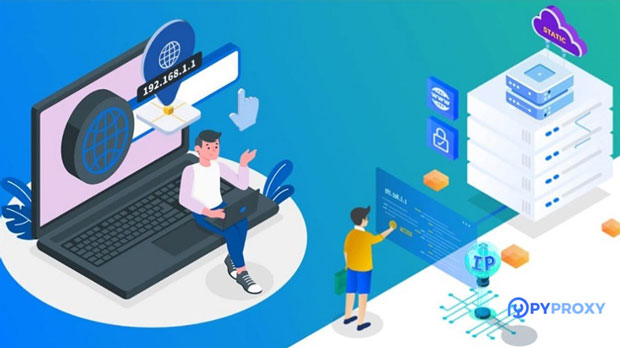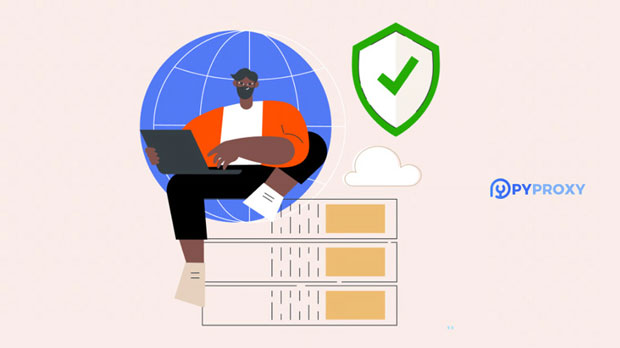Obtaining real-time, updated socks5 proxies is a critical task for businesses and individuals who require consistent, secure internet browsing, anonymity, and data scraping. Using an API to automate the acquisition of these proxies can significantly streamline the process, ensuring users always have access to fresh, anonymous connections. This article explores how you can utilize APIs to access real-time updated Socks5 proxies, the benefits of this approach, and practical considerations for implementation. From understanding the mechanics of Socks5 to how APIs work, we will cover the essential steps and key factors in building an efficient, secure system. Understanding Socks5 ProxiesBefore diving into the process of acquiring real-time updated Socks5 proxies via an API, it’s essential to first understand what a socks5 proxy is and how it works.What is a Socks5 Proxy?A Socks5 proxy is an advanced proxy server protocol that facilitates anonymous communication over the internet. It is one of the most popular types of proxies, offering enhanced privacy and security by routing traffic through a remote server. Unlike HTTP proxies, which only work with web traffic, Socks5 proxies can handle various types of internet traffic, including email, instant messaging, and P2P connections.How Does Socks5 Differ from Other Proxies?Socks5 proxies are different from other proxy types, such as HTTP and HTTPS proxies, in that they support a wider range of protocols and are generally more flexible. They also do not modify the data being transmitted, which makes them more secure and less likely to be detected. In addition, Socks5 proxies support authentication, meaning only authorized users can access them.The Role of APIs in Managing Socks5 ProxiesAn Application Programming Interface (API) is a set of protocols and tools that allow different software applications to communicate with each other. When it comes to Socks5 proxies, an API acts as an intermediary between your system and the proxy provider, automating the process of obtaining fresh, anonymous proxies whenever you need them.How APIs Streamline Proxy ManagementAPIs allow users to integrate the process of acquiring Socks5 proxies into their applications seamlessly. Instead of manually sourcing proxies or relying on a static list, APIs enable real-time updates and offer proxy rotation, ensuring you always have access to new, unblocked proxies.The most significant benefit of using an API to manage Socks5 proxies is the ability to automate the proxy acquisition process. Instead of manually searching for new proxies and verifying their functionality, an API can provide this data automatically and update it as needed.Steps to Use an API for Real-Time Updated Socks5 ProxiesTo effectively use an API for obtaining real-time updated Socks5 proxies, there are several key steps you should follow:1. Select a Proxy API ProviderWhile we will not endorse any specific provider, you will need to select a provider that offers an API that supports real-time proxy updates. The API should support Socks5 proxies and provide options for authentication, proxy rotation, and secure connections.2. Obtain API AccessOnce you've selected your provider, the next step is to obtain access to their API. Most providers will require you to register and generate an API key. This key is used to authenticate requests, ensuring that only authorized users can access the proxy service.3. Understand API DocumentationBefore you start using the API, carefully review the API documentation. This will help you understand how to make requests, what parameters are needed, and what the response will look like. API documentation typically includes information on authentication methods, available endpoints, rate limits, and error handling.4. Integrate the API into Your ApplicationOnce you're familiar with the documentation, you can integrate the API into your application. Whether you're building a data scraping tool, a secure browsing application, or any other service that requires real-time Socks5 proxies, you can use the API to automatically retrieve proxies and implement them in your application. This integration typically involves making HTTP requests to the API’s endpoints and parsing the responses.5. Implement Proxy RotationTo maximize the effectiveness of your real-time proxies, you should implement proxy rotation. Many APIs offer built-in proxy rotation functionality, which means the system will automatically rotate through a list of available proxies at set intervals. This is crucial for avoiding IP bans and ensuring anonymity, especially if you are conducting activities like web scraping or performing automated tests.6. Monitor and Adjust API RequestsReal-time proxy acquisition isn’t a one-time setup. You need to continuously monitor the status of the proxies you are using. Many proxy APIs provide status checks to ensure that the proxies are still functional and anonymous. Additionally, you may need to adjust the rate at which your system requests new proxies, depending on your use case and the volume of traffic.Key Considerations When Using APIs for Real-Time Socks5 ProxiesWhile APIs are an excellent way to automate proxy acquisition, there are several important considerations to keep in mind when using them to access real-time Socks5 proxies:1. Rate Limits and ThrottlingMany proxy API providers impose rate limits to ensure fair use of resources. Depending on your usage, you may need to account for these limits and implement throttling or request pacing to avoid hitting the maximum number of allowed requests. Failure to adhere to rate limits could lead to temporary or permanent suspension of access to the proxy API.2. Security and EncryptionWhen dealing with proxies, security should always be a priority. Make sure that the API provider supports secure connections (e.g., HTTPS) to ensure that your data remains protected during transmission. Additionally, verify that the proxies themselves are anonymous and secure to prevent data leakage.3. Proxy Availability and ReliabilityThe quality of the proxies you obtain through the API is crucial. Look for APIs that offer reliable, high-speed proxies with minimal downtime. Unreliable proxies can lead to connection issues and failed tasks, which could affect your operations.4. Proxy Rotation SettingsFor tasks such as web scraping, it is essential to rotate your proxies regularly to avoid detection and bans. Ensure that the API allows for proxy rotation, and if possible, customize the frequency of rotations based on your requirements.5. Cost and BillingMost APIs charge based on usage, so it’s essential to understand the pricing model. Make sure that the API's cost structure aligns with your budget and the scale of your operation. Some providers offer tiered pricing based on the number of proxies used, while others may charge based on the number of requests made.ConclusionIn today’s digital landscape, access to real-time updated Socks5 proxies is a necessity for many online activities, from securing browsing sessions to performing automated web scraping. By leveraging an API to automate the acquisition of Socks5 proxies, users can ensure that they always have access to fresh, anonymous, and secure proxies. By carefully selecting an API provider, integrating it into your system, and understanding the critical factors like proxy rotation, rate limits, and security, you can maximize the effectiveness of your proxy usage and minimize potential issues.The ability to continuously rotate and update Socks5 proxies using an API is a powerful tool for enhancing privacy, ensuring security, and maintaining reliable internet connections for a variety of online activities. With proper implementation and monitoring, the use of APIs for real-time proxy management can greatly simplify the task of maintaining anonymous internet access at scale.
Jan 10, 2025
![arrow]()



















































